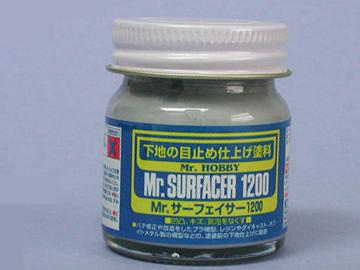
I hate metal miniatures. There is nothing more frustratingly time consuming than preparing a metal miniature for painting.
With resin and plastic you can remove mould lines, flash and imperfections relatively quickly with a scalpel and files/sand paper. With metals though, it not only takes much longer to remove these, since the material is much stronger and more brittle, but you also have to put up with pitting on almost all surfaces.
Yes, sometimes resin miniatures get spots where the finish is a little rough and pitted, but with metals it tends to be all over the figure. Very annoying!
There is a couple of ways to deal with this:
Sanding
Sanding pitted and rough surfaces with fine grit wet/dry paper (starting with 800 and finishing with 1000+) is a good starting point for cleaning up the surfaces of a metal miniature. For tighter nooks and crannies, you can cut small strips and glue them to pieces of wire or cocktail sticks to get in at them.
However, sanding will only go so far to clean up a metal miniature. Often the pitting involves both raised bumps and recesses, so unless you want to spend forever sanding a couple of mm off the entire model, you are going to need to do some filling too...

Milliput
Milliput is a two part epoxy putty that is water soluble, meaning it can be diluted to create a milky solution that can be applied with a brush and used to fill small recesses. Larger mould shift line recesses can also be filled with it as, while still fresh, it can be worked into shape and smoothed flush with the mini. It can then be filed to a smooth finish once cured. The only downfall is that it takes a couple of hours to fully cure and can take a while to ensure all gaps have been filled flush.
Mr Surfacer
Mr Surfacer comes as a grey liquid in a jar which cures in about 15 minutes to a plastic like finish. It can be applied neat from the jar to fill bigger gaps, or thinned (using Mr Colour Thinner) to create a more fluid mixture which can be painted on to fill smaller, shallower recesses. Mr Surfacer (1000 or 1200) can also be thinned and used as a primer through an airbrush, leaving a smooth finish.

One of the main benefits of this product is that no sanding is necessary on the finish as it is self levelling. Of course, if you aren't covering the entire surface, you will likely still have a small seam where the edge of the dried Mr Surfacer meets the metal surface of the model. In these instances, some light sanding with wet dry will be all that's needed.
On the Workbench
Why this outburst of hatred towards metal miniatures? Well, recently I decided to start working on an Inquisitor scale Eversor Assassin miniature from Games Workshop which I've had lying around since last year.

A nice sculpt, though with a horrendous amount of mould lines, mould shift, flash and pitting. The armour plating in particular required a lot of work to get it back to it's smooth shapes and hard edges. I also chose to remove all of the protruding injector type things from the armour plates. Partly to allow me to get them smooth and in shape again, partly because they were badly cast and would have required a lot of work to get back to their intended state and partly because I just think it looks cooler and more fitting of a sleek, deadly assassin.
All in all, I've spent about 3 days on and off just cleaning this miniature up and re-sculpting, detailing and filling areas to get it ready for paint.
Urgh!

The frustration is seconded by your girlfriend!!!! xxxxxxxx
ReplyDeleteLOL Ioana, Dante I feel your paint, but at least you will have a nice model in the end right :). Best of luck on this. I take it you have put the tanith on the back burner for the moment while you work on this?
ReplyDeletei just started paint less than a year and i have ots of trouble of geting a smooth surface on metal mini too. however i avoid resin mini coz i think washing the paint off metal mini is much easier, resin is a bit too brittle when brushed upon.
ReplyDeleteRight, it may take some real cleaning, but you'll have something you can be proud of in the e end.
ReplyDeleteRon, From the Warp
Thanks for the comments guys.
ReplyDeleteAlex - Not entirely, vie primed the finished trooper and been working on the sculpting for another 2, I just wanted a side project so I don't lose interest and something which I can get back into the swing of painting on after a few months off.
Vegel - true, metal miniatures are a bit easier to strip, plastics are probably even easier though (using something like Simple Green) since the paint will be easier to get out of all the details.
Ron - Cheers mate. Here's hoping! It would just be nice if it wasn't such a chore to clean models like this up. In fairness, it's clearly an older casting, since GW are normally better than most for the quality of their castings. I don't think the newer metal mix they use pits quite as much as the older models do (typically the ones with lead in them).
One advantage metals do have is that you can twist the parts slightly to improve poses. I feel your pain with the cleaning and painting woes, though.
ReplyDelete